

7 April 2020, TuesdayÂ
25 March 2020, Wednesday
Amal Clooney seeks UN attention for Pakistan arresting the Jang group owner
24 March 2020, Tuesday
15 March 2020, Sunday
COVID-19 and Pakistan: Closing down educational institutions and social gatherings

7 April 2020, TuesdayÂ
The Federal Investigation Agency’s (FIA) report regarding the crippling sugar and wheat crises challenging Pakistan, released on 4 April, has revealed names of many political elites pertaining to the ruling PTI government, allied PML-Q and opposition parties. The report accuses them of gaining monetary benefits from the crises. The report accuses PTI leader Jahangir Tareen and a brother of ex-National Food Security minister Khusro Bakhtiar as being the main beneficiaries; but also reveals that (son of a key PML-Q leader) Moonis Elahi’s companies had utilized the situation and adds names of PML-N’s Chaudhry Munir and the Omni group as recipients. (The News International, 7 April 2020)
However, the report does not reveal who influenced the Punjab government to issue sugar mill subsidies; why the Economic Coordination Council (ECC) approved sugar export; and whether EEC’s decision was with or without consultation with the PM. The ruling PTI government won the 2019 elections with its anti-corruption narrative and campaigns against allegedly corrupt PML-N and PPP; and hence will have to act swiftly. To PTI’s credit, Imran Khan himself had ordered the probe and called for it being made public.
The sugar baron Tareen spilled some beans on the matter. He said differences between the Principal Secretary to PM, Azam Khan and himself on the vision for the country, need for bureaucratic hindrances and Tareen’s advocacy for prioritizing PTI’s Tabdeeli Agenda led to the accusations against him. He said he would not return the 500 million subsidies (a small sum he argued compared to the corresponding 2.5bn given during the PML-N’s rule) and argued that having paid 23bn taxes from 2015-2020, 500mn was no profit. Taalso pointed out that it was the government’s decision to not reduce the peaking sugarcane prices and to instead allow subsidies.
On 25 April, the detailed report will be released. Meanwhile, ministers are being shuffled, hired anew, moved to OSD posts; and SAPM on accountability Mirza Shahzad Akbar has announced PM’s promise for impartial austere action against offenders.
The larger question is why the crisis was allowed to spiral into its present magnitude with a sheer lack of timely action.
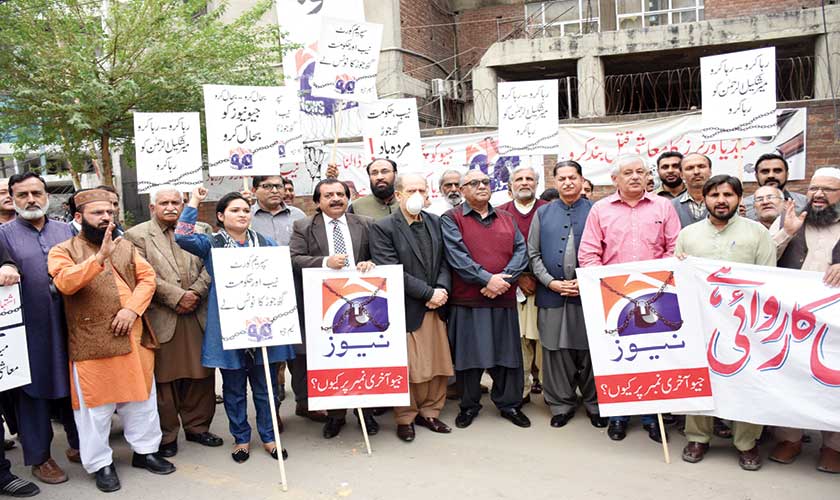
25 March 2020, Wednesday
On 23 March Amal Clooney’s Doughty Street Chambers confirmed it had filed two complaints with the UN against Editor-in-Chief of Geo/Jang Group Mir Shakil-ur-Rahman’s arbitrary and politically-motivated arrest. First, an urgent appeal to the UN Working Group on Arbitrary Detention, on his behalf. Second, an appeal lodged to the UN Special Rapporteur on the Promotion and Protection of the Right to Freedom of Opinion and Expression. (The News International, 25 March 2020)
Mir Shakil-ur-Rahman’s international counsel team will consist of Doughty Street Chambers’ Tatyana Eatwell, Caoilfhionn Gallagher QC and Jennifer Robinson. His counsel alleged that NAB had directly and indirectly threatened Jang group’s journalists, reporters, editors and producers in the past 18 months and accused PM Imran Khan’s government of weaponizing NAB to shun critics. Pakistan, a signatory to UN’s Universal Declaration of Human Rights, will be obliged to obey UN.
The Doughty Street Chambers said that Mir Shakil was arrested on 12 March by NAB in a 1986 property transaction case, has been imprisoned and kept in unhygienic and unsafe conditions since and denied “meaningful and regular access to his lawyers”.
Chief Executive of the Association for International Broadcasting (AIB) Simon Spanwick expressed concerns over the detainment of Mir Shakil-ur-Rahman in violation of national and international laws and over the attempts to curb Geo TV channels’ carriage agreements and licenses.
Previously, on 21 March, The News International reported that efforts to fabricate a new case against Mir Shakil, were afoot after the 34-year old land case allegations crumbled. National Accountability Bureau Lahore had requested governmental bodies to submit any information related to Mir Shakil.
Jang Media group owns Geo TV and some of Pakistan’s largest newspapers.NAB is currently re-investigating the case regarding the already-settled loan from National Bank of Pakistan (an issue created by the then government to harass Jang group), evidence-lacking foreign funding allegations (less than one percent of Geo’s revenue) and probing Security and Exchange Commission of Pakistan (SECP) regarding filing of annual accounts of Geo/Jang group.
Following the formation of the media commission on the petition of Hamid Mir and Absar Alam, Geo TV/Jang had offered to declare personal assets and those of their employees, provided across the media industry such a declaration was made mandatory.
Mir Shakil-ur-Rahman was also falsely accused of being an enemy/traitor of Pakistan by ARY. The defamation case was proved baseless due to lack of evidence following Mir Shakil’s vindication by the London High Court and Ofcom. ARY Network had to pay £3 million in costs and damages.Furthermore, Mir Shakil’s vindication of false blasphemy allegations by Quetta Sessions Court, Balochistan High Court and Gilgit-Baltistan Supreme Appellate Court was not aired by ARY.
Amal Clooney, a leading human rights attorney, has previously represented the cases of ISIL victim Nadia Murad, Al Jazeera journalist Mohamed Fahmy, the Greek ‘Elgin Marbles’ sculptures, former Philippine president Gloria Macapagal-Arroyo, former Maldivian President Mohammed Nasheed, Azerbaijani journalist Khadija Ismayilova, two Reuters journalists Wa Lone and Kyaw Soe Oo, Armenian genocide, and more.
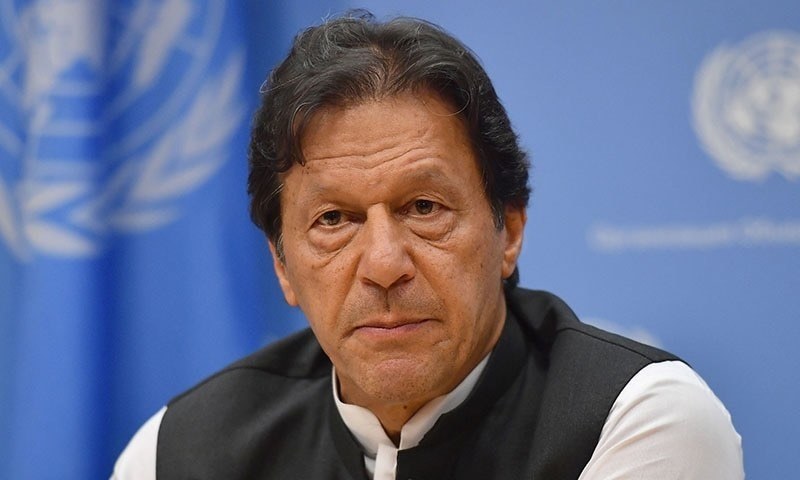
24 March 2020, Tuesday
Coronavirus cases across Pakistan reached 875 on 23 March 2020, with Sindh Education Minister Saeed Ghani, a journalist and foreigners amongst the victims. The discrepancies amid the Centre and Sindh provincial government regarding the shutdown is continuing. Post the news of Sindh educational minister, Sindh CM Syed Murad Ali Shah has ordered testing of himself and his team members. (Dawn, 24 March 2020)
In Islamabad, six Tablighi Jamaat members residing in a mosque at Bahara Kahu tested positive for coronavirus. On 22 March six more people (of unconfirmed nationalities) also fell victims for the pandemic.
In Punjab 24 more tested positive for COVID-19 raising Punjab’s tally to 246; 14 of which were participants of the Tablighi Jamaat, four of which were Chinese nationals and 177 were pilgrims returning from Iran. SAPM on Information Dr. Firdous Ashiq Awan, during a media briefing, said the Centre disagreed with the need for a lockdown and instead recommended “convincing” the population to remain indoors. She announced the Centre’s disagreement with the lockdown decision of the Sindh government while also announcing that the federal government had approved the provinces’ request for military deployment.
NDMA Chairman Lt Gen Mohammad Afzal said their priority was providing safety gears for medical and paramedical staff in direct contact with the patients. The regarded the State Bank of Pakistan’s move to facilitate transfer of NDMA’s money for procurement to Pakistan embassy in China. He added that medical equipment like ventilators, personal protection equipment (PPEs) and a consignment of 125-tonne PPEs would be sent to Pakistan by China on 26 March.
During a separate press conference, SAPM on National Security Division Dr Moeed Yusuf urged Pakistanis abroad to avoid travelling back home. SAPM on Health Dr Zafar Mirza said that only people can overcome the challenge of coronavirus.
Meanwhile, Punjab CM Usman Buzdar notified that the shutdown would be extended for 14 days, said the restrictions would include public transportation and public and private offices and called for strict implementation of social distancing by deployed military; 17 Chinese engineers are showing symptoms of coronavirus; and Corona Experts Advisory Group (CEAG) was constituted by Punjab government.
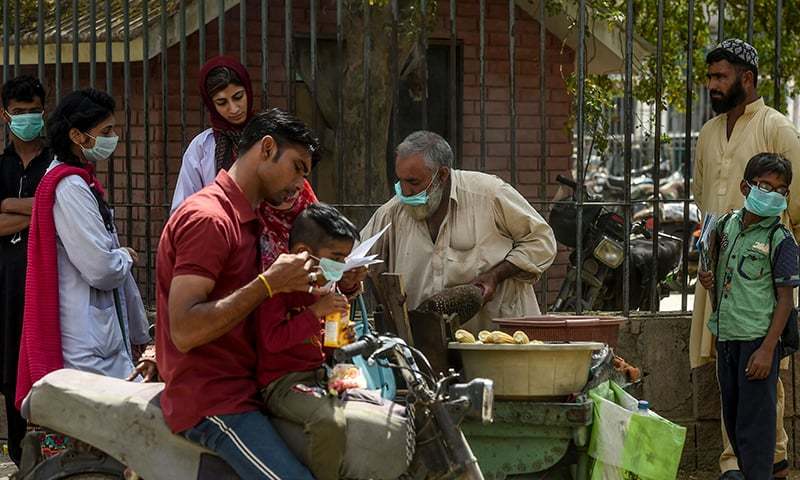
15 March 2020, Sunday
The National Coordination Committee (NCC) was set up by the National Security Committee (NSC) on 13 March, to grapple with the coronavirus outbreak in Pakistan via day-to-day analysis methods. (The News International, 14 March 2020)
NCC is a high-level body with the ability to take coordinated efforts to implement unanimous national-level decisions regarding the pandemic. National Disaster Management Authority would lead the efforts and dispense required funds. NCC would be convened by Directorate of Military Operations and consist of chief ministers, federal ministers, Surgeon General of Pakistan, NDMA chairman, and representatives of Inter Services Public Relations and Inter-Services Intelligence.
NCC, chaired by PM Imran Khan, made significant decisions. First, the shutdown of educational institutions for three weeks. Second, ban on social or public gatherings for two weeks. Third, shutdown of all airports except Lahore, Islamabad and Karachi for international travel and complete closure of Pakistan’s western border with Afghanistan and Iran for two weeks “in the best interest of all three brotherly countries”. To safeguard trade, seaports will continue to operate with heightened screening and surveillance facilities. Fourth, the cancelation of Pakistan Parade Day.
As per SAPM on Health Dr. Zafar Mirza’s statement to the media, NSC appraised the coronavirus situation while resolving to ensure public health and safety. He confirmed 28 cases (now 30) and mentioned seven newly emerging cases in Taftan. He also requested civil courts to suspend hearings for three weeks, and sessions courts and judicial magistrates to decide on remands and bails.
On 13 March, wide-ranging noteworthy developments occurred. First, federal Education Minister Shafqat Mahmood tweeted that universities, colleges, schools, and madrassas would remain suspended till April 5. Punjab government followed. Previously, Sindh province and Khyber Pakhtunkhwa had announced a similar shutdown till May 30 and May 15 respectively. Second, Pakistan Cricket Board (PCB) announced the decision to cut short Pakistan Super League (PSL) 2020. The final match would be held on 18 March instead of 23 March. Third, Islamabad High Court sought federal government’s report on bringing back Pakistani students from China by March 20. Explaining that Pakistani students in China were being provided with all medical care and assistance, Shafqat Mahmood, Minister for Federal Education and Professional Training, said the decision to not bring them back to Pakistan was in the country’s best interest.
Fourth, Dr. Irfan Tahir, Director of Central Health Establishment (CHE) said all immigrants were undergoing temperature screening and thermal scanning at airports. Over a million travelers were already screened, he added.
Meanwhile, opposition MPs of National Assembly have called for a joint session of Parliament to discuss and deliberate the adopted anti-virus steps; Sindh minister Syed Nasir Hussain Shah has offered reward for development of a COVID-19 antidote; Bangladesh has refused to send their cricket team to Pakistan for the matches scheduled to be held on April 1 and April 5; and PPP MNA Raja Pervaiz Ashraf has called for a comprehensive national awareness campaign and an emergency declaration.
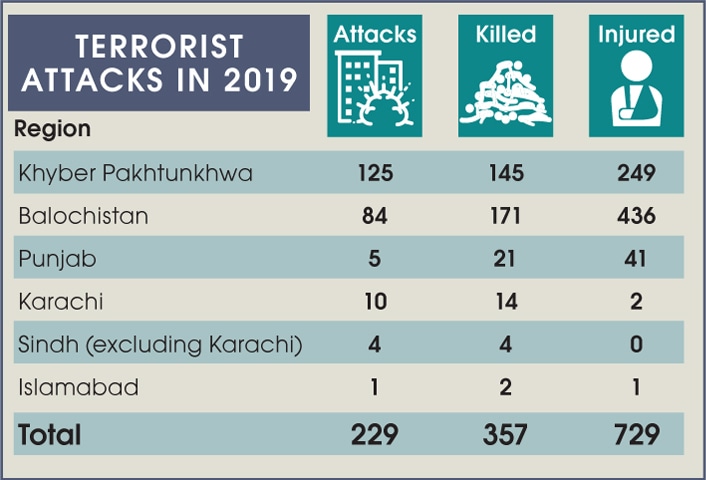
13 March 2020, Friday
Lakshmi V Menon
Pakistan Institute for Peace Studies (PIPS) has published their Special Pakistan Security Report for 2019. PIPS is an independent, non-governmental non-profit advocacy and research think-tank. Since 2006, PIPS has maintained a digital database on conflict and security issues such as inter-tribal in-fighting, sectarian clashes, insurgent attacks, details on terrorists, sectarian related terrorism, cross-border attacks, ethno-political violence, operational attacks by security forces, kidnapping, search and arrest operations of law-enforcement departments, and militant clashes.
As per the report, in Pakistan, terror attacks have dropped by 13 per cent and the number of casualties of terror incidents have decreased by 40 per cent, in comparison to 2018. The most terror attacks were experienced by Khyber Pakhtunkhwa (125), followed by Balochistan (84), Sindh (14), Punjab (5) and Islamabad (1).
The 2019 report consists of nine chapters – Overview of Security, Security Landscape, Militant landscape, State Responses, Militant Landscape of Baluchistan, Wave of Suicide Bombing (2007 to 2011), CPEC Security, Faith-based Violence and other Incidences, and Baloch Insurgency.
Critical challenges such as the FATF decision, de-radicalisation imperative and violent extremism were discussed in the ‘Overview of Security’ and measures like regularizing Madrassas, FATA’s merger into KP and implementing the National Action Plan were recommended.
‘Pakistan’s Security Landscape’ looks at provincial level comparison study regarding targets hit, suicide attacks, sectarian violence, violence against workers and political leaders and border attacks. Balochistan experienced the greatest number of sectarian attacks (7) followed by Sindh (6) and then KP (1). Baluchistan also saw the most attacks on political leaders (across BAP, BNP-M and JUI-F), followed by KP, where leaders of PPP and ANP were attacked.
‘Militant landscape’ covers major actors of instability such as religiously-inspired militant groups like TTP, Jamaatul Ahrar and Hizbul Ahrar, local Taliban, Lashkar-e-Islam, IS, Lashkar-e-Jhangvi, Al-Qaeda in the Indian Subcontinent and Sipah-e-Muhammad Pakistan; and nationalist insurgent groups such as Balochistan Liberation Army, Baloch Republican Army, Lashkar-e-Balochistan, Sindhu Desh Liberation Army, Balochistan Liberation Front, unidentified militants and banned organizations.
A separate chapter is dedicated to the militant landscape of Balochistan which elaborates on nationalist insurgency and religious and sectarian extremism. Insurgent groups’ targets, tactics, internal fissures and advantages are detailed with special reference to Baloch Republican Guards (BRG), Baloch Republican Army (BRA), Lashkar-e- Balochistan and United Baloch Army. Extremists of sectarian nature such as Lashkar-e-Jhangvi, Sipah-e-Muhammad Pakistan (SMP) and ISO; and of religious nature such as Jaishul Adl, Ansar Al-Furqan, Daesh, Tehreek-e-Taliban Pakistan, Jamaatul Ahrar and Hizbul Ahrar are reviewed.
‘State Responses’ looks at operational attacks by security forces against militants and insurgents, clashes and encounters with militants, suspected terrorists arrested in 2019 and failed/foiled terror bids.
The study of ‘Wave of Suicide Bombing in Pakistan’ between 2007-2011 reflects the impact on public perceptions and opinions. The targets have been observed to be rival militant groups and peace committees, western interest diplomats, general public, Shia followers, political and religious leaders and security and law enforcement agencies.
‘CPEC Security in 2019’ discusses development of special security forces, security of projects and workers, security discussions during JCC meetings, Indian opposition, and other developments.
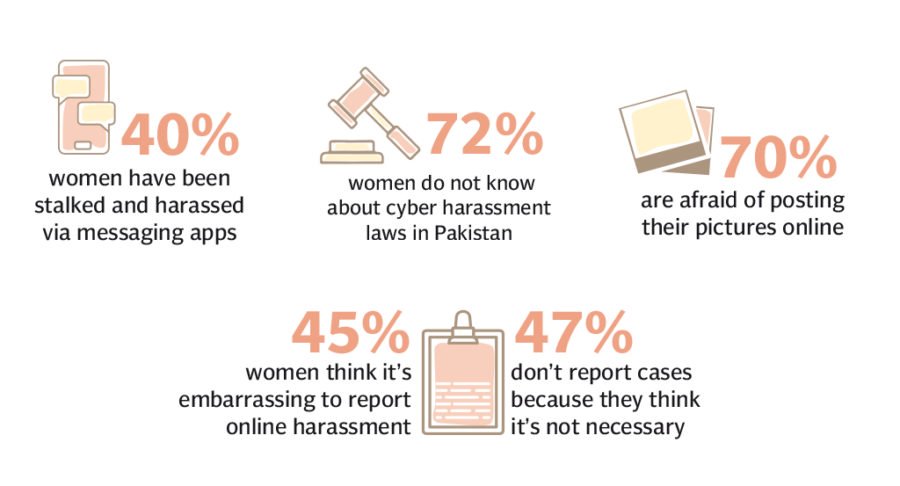
8 March 2020, Sunday
As of January 2020, Pakistan has 76.38 million internet users with 37million of them being active social media users. (Digital 2020 reports, 30 January 2020) Cyber presence is increasing, and so are cybercrimes. Gender-based interpersonal cybercrime causing gender-based violence including physical, sexual and/or emotional harm is rising in Pakistan. Women face blackmailing, cyber-harassment, cyberstalking, cyberbullying, non-consensual distribution and use of compromising intimate videos, images and/or doctored images.
A Pakistani advocacy and research NGO, the Digital Rights Foundation (DRF) shared noteworthy statistical data regarding Pakistani women and cyberspace in their latest report. First, 72 per cent of women are unaware of cyber harassment laws in Pakistan. Second, 70 per cent women are scared to post their images online. Third, 47 per cent of women consider reporting cyber-harassment and cyber-crimes unnecessary. Fourth, 45 per cent of women consider reporting online harassment an embarrassment. Fifth, 40 per cent of all Pakistani women using the internet, are victims to cyberstalking and harassment via messaging apps. (The Express Tribune, 8 March 2020)
DRF executive director Nighat Dad told The Express Tribune that for cyberspace victims in Pakistan DRF had set up a Cyber Harassment Helpline (0800-39393) which would provide “legal advice, psychological counselling, digital security support and a referral system”. Nighat explained that due to social stigma, family restrictions, societal pressures, lack of trust in authorities, time-consuming investigative procedures, increasing threats from harassers and doubts regarding implementation of corresponding laws many crimes go unreported. Meanwhile, digital illiteracy regarding security systems, online platforms and privacy settings add to the vulnerability women face in the cyberspace.
Pakistan’s Prevention of Electronic Crimes Act, 2016, alone guarantees austere reprimands for cyber-crimes. Supreme Court Advocate Rabeeya Bajwa detailed additional laws such as Articles 14 and 19 of the Constitution (Art 14 - which speaks of state’s responsibility to protect dignity of individuals; Art 19 which awards freedom of speech and expression), and Law of Defamation, that could be utilized depending on the nature of the crimes.
However, the disproportionality between rate of convictions and reporting is appalling. As per a report by the Senate Standing Committee on Information Technology, only 32 out of 56,000 filed complaints were under investigation. The committee blamed the FIA and Pakistan Telecommunication Authority. (The Express Tribune, 8 March 2020)
The article from Tribune comes in the wake of the Aurat March, observing International Women’s Day, happening amid discordant gender inequality debates. The “Mera Jism Meri Marzi” (My body, my choice), a bold Urdu slogan has triggered criticism. Federal Information Minister Firdous Ashiq Awan has said that the march misleads Pakistani women. Former Prime Minister and vice president of PML-N said the march’s slogan by creating an incorrect “impression” has failed to highlight relevant issues. The spiteful live discourse between Khalil Qamar, a famous play writer and Marvi Sirmed, an activist aired on 4 March by Neo News is fuelling the ongoing debate.

6 March 2020, FridayÂ
On 5 March 2020, the GSMA issued a report stating that amongst the 15 countries surveyed Pakistan had the greatest gender gap of 38 per cent (with male-female percentage ratio of 81:50) with respect to mobile-phone ownership. Disparity over mobile internet usage was higher at 49percent (with male-female percentage ratio of 37:19). Brazil alone had a negative male-female mobile internet usage and ownership correlation with an adult male-female percentage ratio of 84:85. Generally, female mobile internet usage has increased from 44percent in 2017 to 54 per cent. (Dawn, 6 March 2020)
In Pakistan, the male-female smartphone ratio was 37 per cent to 20 per cent; male-female purchase of own devices ratio was 90 per cent to 42 per cent; 53 per cent females and 55 per cent males said mobiles provided access to useful information, and 58 per cent females said it aided daily tasks.
Despite developments, the gender gap persists with over 300 million lesser women utilising mobile internet usage. Barriers are affordability, lesser awareness, lack of family approval, illiteracy and lack of digital skills.
GSMA is an organization representing the interests of global mobile operators. Over 16,000 respondents from 15 low-and-middle-income countries were studied for the annual GSMA Intelligence Consumer Survey of 2019. The ‘Mobile Gender Gap Report 2020’ is based on this survey.
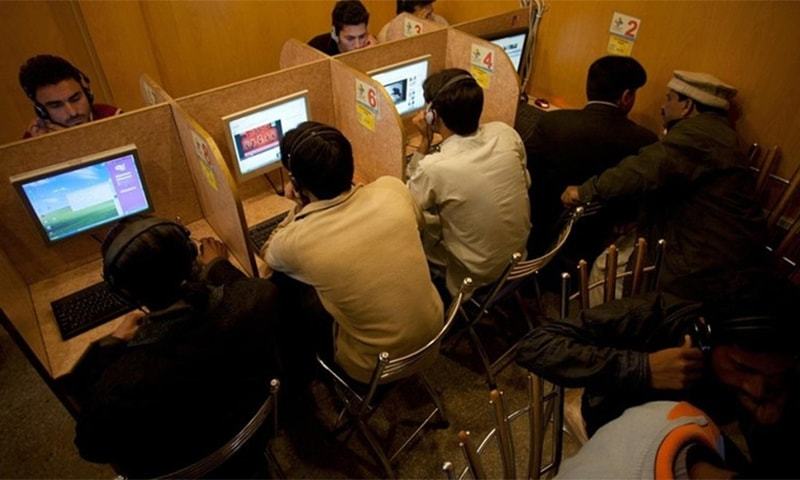
6 March 2020, Friday
The ‘Inclusive Internet Index 2020’, produced annually since 2017 by The Economist Intelligence Unit (EIU) and commissioned by Facebook, ranked Pakistan 76thout of the 100 countries surveyed and 24thout of 26 Asian countries (where one stands for best and 100 for worst); placing it in the final quartile of the “global index overall”. Pakistan ranked lowest in South Asia with Bangladesh ranking 70th, Sri Lanka ranking 56thand India ranking 46th. Sweden topped the index, followed by New Zealand and the US. (Dawn, 5 March 2020)
The EIU said “Notable among its (Pakistan’s) weaknesses is by far the largest gender gaps in the index, in both mobile and internet access. Low levels of digital literacy and relatively poor network quality are major impediments to internet inclusion.” (Dawn, 5 March 2020)
As per the Executive summary, “the Inclusive Internet Index…seeks to measure the extent to which the Internet is not only accessible and affordable but also relevant to all, allowing usage that enables positive social and economic outcomes at the individual and group level.”
In 2020, the index that covered 100 countries represented 91 per cent of the global population and 96 per cent of the world’s GDP, was published alongside the 2020 Value of Internet Survey. 4,953 respondents from 99 countries across the Americas, Asia-Pacific, Europe, Middle East, North Africa and Sub-Saharan Africa participated in the poll. 2020’s chief focus was on the usage of the Internet to manage finances. Nevertheless, it looked at levels of trust in online material, usage of the Internet to improve employment prospects, purchase of goods and services, and for skill development. The results reflect “Internet inclusion across social and economic domains, revealing trends and exploring how digital divides between and within countries are evolving.” (Inclusive Internet Index 2020: Executive summary)
The index measures four domains – availability, affordability, relevance and readiness – which together reflect a holistic image of internet inclusion. Pakistan fared poorly in all.
Pakistan ranked 86thin the availability domain – measuring “quality and breadth of available infrastructure required for access and levels of Internet usage”; 57thin the affordability domain (relatively better) – measuring “cost of access relative to income and the level of competition in the Internet marketplace”; 64thin the readiness domain – measuring “capacity to access the Internet, including skills, cultural acceptance and supporting policy”; and 71stin the relevance domain – measuring “existence and extent of local-language content and relevant content”.
Facebook reported that 4.1bn people (more than half of the global population) enjoys internet connectivity and over 3.5bn are deprived of internet-related opportunities. Additionally, the social media giant made noteworthy observations – first, mobile data has become a game-changer for lower-income groups; second, although narrowing, a wide gender gap remains (unfavourable to women); third, rate of uptake is lessening in hard-to-access regions; and fourth, that the spread of mobile devices does not promise to play an enabler’s role for world’s poorest women.
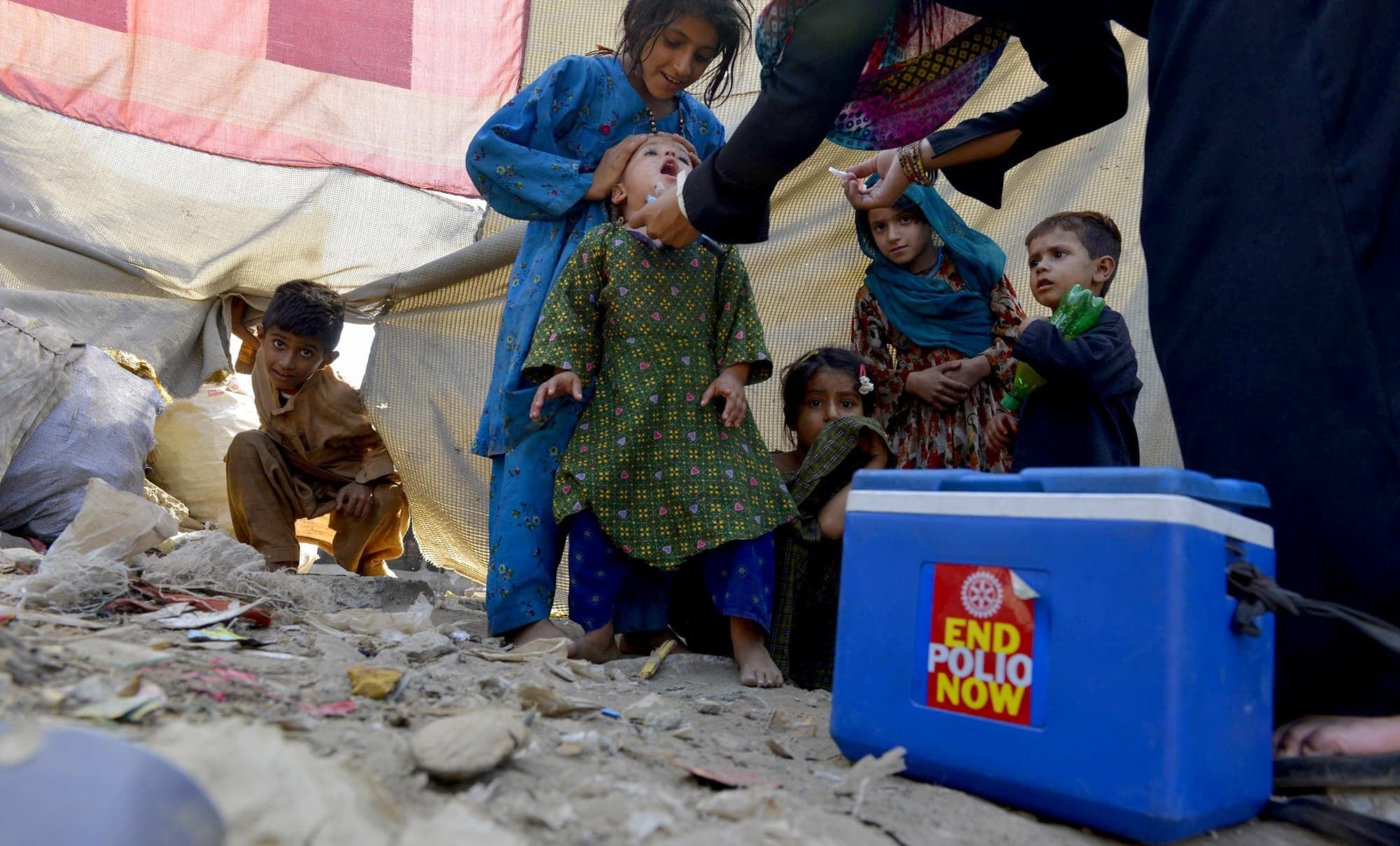
01 March 2020, Sunday
On February 29 2020, Polio Eradication Initiative (PEI) officials confirmed that a 28-months old child, Anil Rajar, from Bhiria Tehsil of District Naushero Feroz tested positive for Wild Polio Virus 1 (WPV1), increasing Pakistan’s total polio cases in 2020 to 23 and divulging polio management programs’ inefficacies. As per an Emergency Operation Center (EOC) official, the date of onset has been confirmed as February 8 2020; both the lower limbs of the child have been affected by poliovirus, and the child’s parents said that seven doses of the Oral Polio Vaccine were administered. (The News International, March 1 2020)
Previously, the National Emergency Operations Centre’s coordinator, Rana Muhammad Safdar, blamed political transition and widescale bureaucratic change for the bouncing back of polio cases. He said that for a programme relying on 265,000 polio vaccinators catering to 35 million children, going door to door, political transition is challenging. (Al Jazeera, December 29 2019)
International Health Regulations (IHR) classifies Pakistan as a country infected with WPV1, cVDPV1 or cVDPV3 having a latent risk of global spread; thus, subject to temporary recommendations as of December 2019.
From 306 cases in 2014, Pakistan had successfully brought down incidence to 12 in 2018, however, amidst political transition, parents deprioritizing vaccination due to imminent dangers, polio boycotts, collective bargaining, public misinformation drives and attacks on polio workers incidence of the infection soared to 146 (a five-year high, of which 111 cases were from the province of Khyber Pakhtunkhwa) in 2019 (Global Polio Eradication Initiative).
In 2019, thousands of families in Orakzai, Bannu, Kurram, Peshawar and North Waziristan boycotted the vaccination campaigns. Conspiracy theories have caused attacks on polio workers killing over 100 people since 2012 (Al Jazeera). Campaigns are linked to “Western” conspiracy as a fake vaccination campaign was used to confirm Osama bin Laden’s identity. In April 2019, suspicions led to the boycott of polio eradication campaigns and the burning of a local government hospital. Nevertheless, over 175 pieces promoting misinformation were taken down by websites such as YouTube, Twitter and Facebook. Countries receiving aid for polio-eradication experienced demands by citizens for basic amenities (such as electricity, jobs, internet). As per GPEI, global donors spent over $800m on international polio-eradication efforts.
According to WHO, there has been a 99 per cent drop in poliomyelitis cases since 1988 – from 350,000 to 33 in 2018; owing to sustained oral and injected vaccination campaigns targeting children under five. Presently, the fatal debilitating paralytic infectious disease persists in three countries only – Afghanistan, Pakistan and Nigeria.
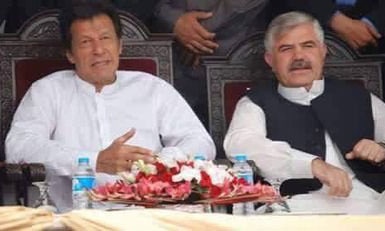
27 January 2020, MondayÂ
27 January 2020, Monday
As Imran Khan has been attempting to address the intra-party fire in Punjab, in Khyber Pakhtunkhwa, where the PTI has a bigger influence when compared with the other provinces, had to engage in a surgical strike by sacking three cabinet ministers for “plotting” against the Chief Minister in KP. (Dawn, 27 January 2020)
Three ministers of the KP cabinet - Mohammad Atif Khan (State Minister for Tourism, Culture, Sports, Archaeology and Youth Affairs), Shakeel Ahmad (State minister for Revenue), and Shahram Tarakai (State Minister for Local Government, Elections and Rural Development) were removed by the Governor of the province. Shaukat Ali Yousafzai, the Information Minister was quoted saying: “The sacked ministers were involved in grouping within the party and did not own decisions of the cabinet.” (Dawn, 27 January 2020)
Mahmood Khan has been appointed as the Chief Minister of KP following the 2018 elections, that witnessed the PTI sweeping the KP. Of the 145 seats for the provincial assembly, the PTI has 95 seats. The primary opposition for the PTI in the provincial assembly comes from JUI-F, ANP, PML-N and PPP that have only 15, 12, 6 and 5 seats respectively. This would underline the strength of the PTI in the KP provincial assembly when compared to the other provinces. In Punjab, the PTI only holds 181 seats out of the total 371, where the PML-N has 166 seats. In Sindh, the province is ruled by the PPP government. In Balochistan, though the PTI is a part of the ruling coalition in the province, it has only seven seats out of the total 65.
The primary problem for the PTI in the KP has been to find an able replacement to Pervez Khattak, who is now a federal minister in Islamabad. Khattak was not only a strong leader within the PTI but also was a strong Chief Minister of the PTI in KP during 2013-18. During his period as the Chief Minister, he was primarily responsible for addressing the security situation in the KP and also deepen the PTI roots within the province.
Mahmood Khan’s appointment as the Chief Minister in 2018 was a surprise even within the PTI. According to reports, though Imran Khan preferred Atiq Khan (who was sacked now), he had to yield to the pressure from Khattak and other seniors from the party. Mahmood Khan served as the provincial minister for Sports, Culture, Tourism and Museums during 2016-18 under the then PTI Chief Minister Pervez Khattak. Before that, he also served as the provincial minister for Home and Tribal Affairs. Mahmood Khan is considered closer to Khattak; he was not a strong candidate for the CM position within KP, and the latter was primarily responsible for pushing him to the post.
The three ministers who have been sacked on Sunday were reported to be attempting to form a forward bloc within the party in KP. According to Dawn, they got a few provincial assembly members for a dinner party, that has raised the red flag to the party’s provincial decision-making team, where Khattak has a strong influence. Khattak and Atiq Khan, who has been sacked have their differences as well.
The provincial assembly that was to reconvene, has been postponed to February.
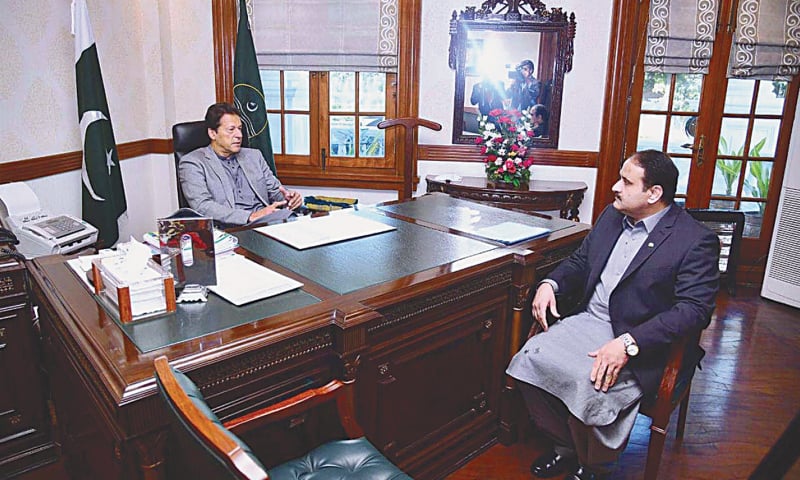
27 January 2020, MondayÂ
27 January 2020, Monday
Imran Khan visited Lahore, the provincial capital of Punjab and had one-to-one discussions with, Usman Buzdar, the Chief Minister of Punjab, and also met with PTI members of the provincial assembly and the national assembly. Imran Khan was quoted saying: “a comprehensive and effective mechanism be developed for better liaison among elected representatives and civil bureaucracy” and “the chief secretary and IG Police should work as team members of CM Buzdar.” (Dawn, 27 January 2020)
Trouble was brewing within Punjab for the ruling PTI government, during the recent months. There were three aspects to the trouble. First was the trouble within the PTI; not everything has been smooth for the PTI in Punjab – both within the provincial assembly and outside it. Though Usman Buzdar was handpicked by Imran Khan, he has been considered as a weak candidate for the post. Many suspect, that it was his weakness that factored in Imran Khan choosing him to lead Punjab so that he would have a yes man in Lahore ruling Punjab. Many within the party in the province, believe they have a better chance and credential to lead Punjab on behalf of the party.
The second aspect is related to the relationship between the civilian bureaucracy and political leadership. The civilian bureaucracy in Punjab, the PTI leaders in Punjab complain that it acts on its own and does not listen to the political leadership at the provincial and constituency levels. It was this difference that has prompted Imran Khan to warn that there has to be a “better liaison among elected representatives and civil bureaucracy.”
The third aspect of Imran Khan’s meeting with Buzdar is related to the trouble within the ruling coalition in Punjab. The PML-Q led by the Chaudhry brothers have been upset with the PTI within Punjab. The party’s electoral strength is not significant; it has three seats in the national Parliament, and ten seats in the provincial assembly of Punjab. However, the PML-Q’s support is crucial for the PTI – both at the national assembly and in Punjab. Besides, the PTI also has a problem with its other partner – MQM-P from Sindh.
One of the primary complaints of the PML-Q is related to the above second aspect in terms of postings and transfers relating to civilian bureaucracy in those constituencies where PML-Q has a base.
Will Imran’s visit resolve the above three issues, or will only act as a band-aid?
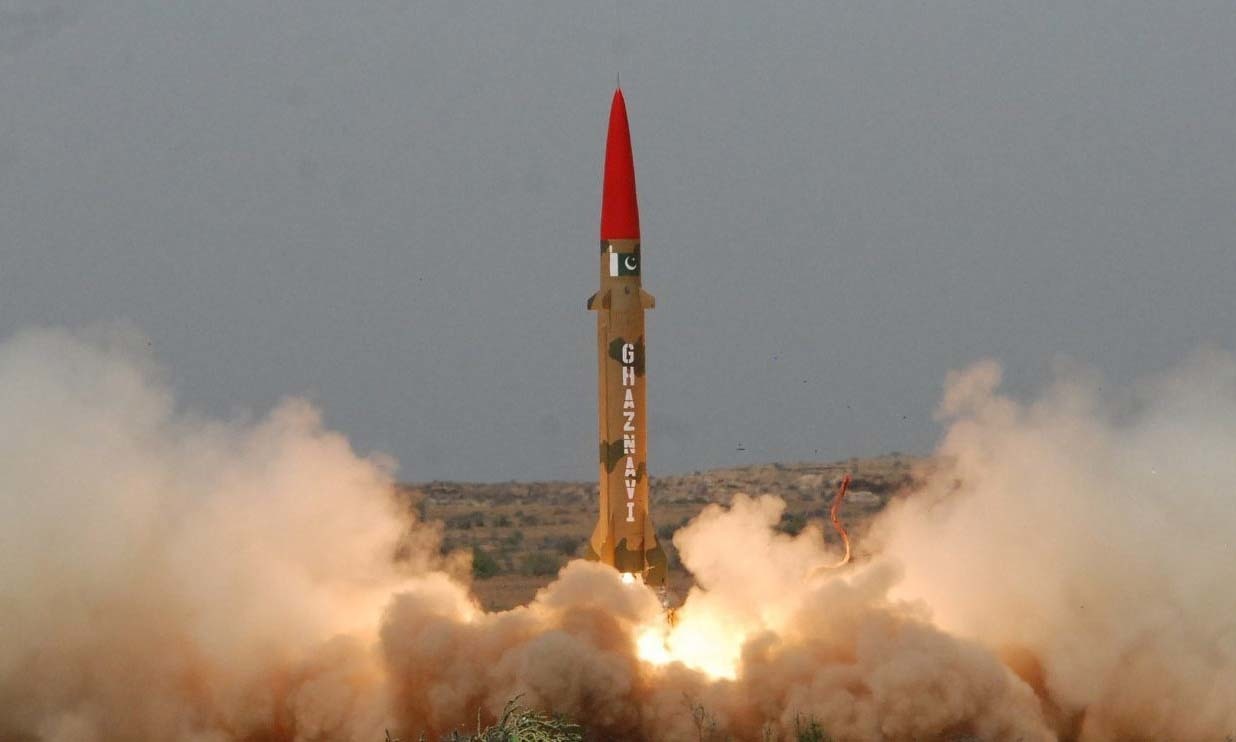
25 January 2020, Saturday
On 23 January 2020, Pakistan army's media wing, Inter-Services Public Relations (ISPR) announced the successful training launch of Ghaznavi (Hatf 3), a road-mobile, the solid-fueled, nuclear-capable surface to surface short-range ballistic missile with capacity to strike up to a range of 290 kilometers.
ISPR stated that "The training launch was part of Field Training Exercise of Army Strategic Forces Command aimed at rehearsing operational readiness procedures during day and night." As per the statement, the Director-General Strategic Plans Division credited the Army Strategic Forces Command’s operational preparedness for showcasing proficiency in the weapon system’s handling, also expressing complete confidence in the Strategic Command and Control System Strategic Forces’ capabilities.
Dr Nabeel Hayat Malik, Chairman NESCOM, Lt. General Qazi Muhammad Ikram Ahmad, Commander ASFC, Lt. General Nadeem Zaki Manj, Director General Strategic Plans Division (SPD), senior officials from ASFC and SPD, engineers and scientists of strategic establishments witnessed the launch at an undisclosed location. ISPR concluded that Prime Minister Imran Khan and President Arif Alvi “congratulated the nation on this landmark achievement”.
Hatf 3 is 8.5m in length, 0.8 m in diameter, offers a payload of a single warhead weighing 700 kilograms, has a launch weight of 4650 kilograms and is powered by a single-stage solid fuel propellent. The warhead can be high explosive (HE), conventional, submunitions or nuclear 12 to 20 kT. According to reports, Ghaznavi’s inertial guidance system ensures 250m CEP accuracy that could be increased to 50m CEP with territorial guidance.
Ghaznavi’s development officially commenced in 1987 but got terminated in 1994 owing to the purchase of PRC DF-11 missiles. Development resumed in 1997 to expand the limited DF-11 missiles in Pakistan’s arsenal, or to mask future procurements as domestic production (as alleged). Hatf 3, designed and developed by National Development Complex, is similar to the Chinese DF-11 variants – an improved ‘Scud’ type BM with military utility in deployment against stationary, large targets like military bases, airfields; threatening urban civilian areas. With 30-50 units in service, the production was terminated in April 2007.
In May 2002, the SRBM named after the 11th-century Afghan king Mahmud Ghazni was first flight-tested and has been in Pakistan Army Strategic command’s service since 2004. Subsequent tests of Ghaznavi occurred in December 2006, February 2008, May 2010, May 2012 and August 2019.
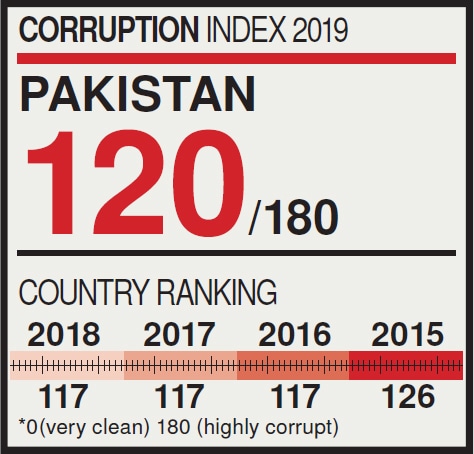
24 January 2020, Friday
24 January 2020, Friday
On 23 January 2020, Transparency International, an INGO based in Berlin, published the results of the Corruption Perception Index for 2019 placing Pakistan at the 120th rank, between Moldova and Niger, with 32 points. The country has slipped three ranks (117th rank) and dropped a point (33 points) since 2018. Simply put, in Pakistan, corruption has worsened. The opposition blamed the government.
CPI ranks 180 countries “by their perceived levels of public sector corruption, as determined by expert assessments and opinion surveys.” A scale of zero to 100 is applied wherein zero indicates “highly corrupt” and 100 indicates “very clean”. In 2019, over two-thirds of countries scored below 50, fixing the average at 43; 11 points higher than Pakistan’s score. The country was the fifth lowest in South Asia, only above Maldives (130), Bangladesh (146) and Afghanistan (173).
A huge blow to Pakistan Tehreek e-Insaaf and Imran Khan who won the 2018 elections through anti-corruption and merit promotion promises. It is the worst standing in the past five years. Since 2015, while the “corruption mafia” (as Imran Khan branded) ruled, Pakistan’s Corruption index was 116-117. PTI has provided amnesty to the corrupt and paralyzed the graft buster, National Accountability Bureau through a presidential ordinance. While commoners were tax-burdened, affluent sectors enjoyed tax waivers. However, Chairman TI Pakistan Sohail Muzaffar credited NAB, under Justice® Javed Iqbal, with better performance in 2019.
The report comes immediately after US’ remarks (23 January 2020) on spiking corruption and lack of transparency regarding CPEC and in Pakistan at large and Imran Khan’s dismissive response claiming that past civil-military conflicts were due to corruption whereas his government and the military are in sync.
Corruption poses a pressing integrity risk hindering international investment in Pakistan through collusive contracting, persistent security hazards and macro-economic uncertainty. Telecommunications, energy, textiles and infrastructure are prospective areas for foreign investment. Large foreign investors are generally less vulnerable and bring along foreign bribery laws which percolate across conglomerate chains forcing compliance amongst local firms; thus, tackling corruption. Nevertheless, a better level of transparency is necessary to attract such investors.
TI put forth monitoring political financing, solidifying checks and balances, regulating preferential treatment, controlling lobbying, empowering citizens, and managing conflicts of interest as methods to tackle corruption.
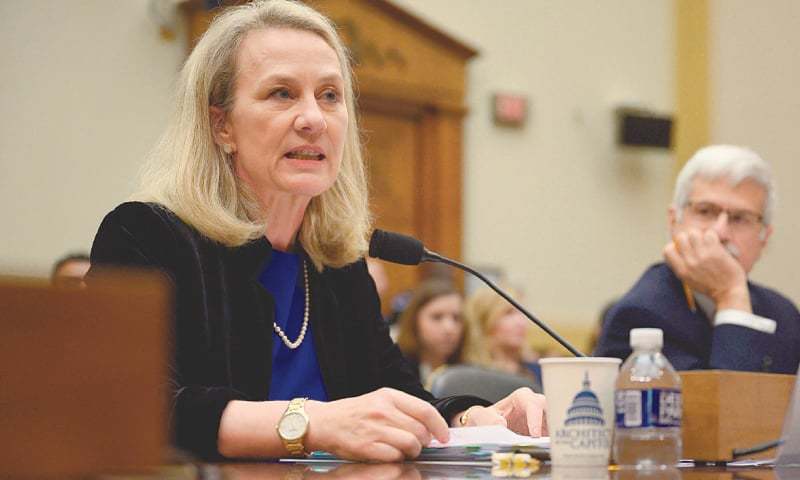
23 January 2020, Thursday
23 January 2020, Thursday
US Assistant Secretary Alice Wells warned Pakistan that the multi-billion-dollar China Pakistan Economic Corridor would further Islamabad’s stifling debt burden and flame corruption while ousting profits and employment to the Chinese. Dawn (23 January 2020) quoted Ms Wells as raising vital concerns and long-term effects while pitting Chinese financing against US grants.
Wells said that CPEC was a financing arrangement ensuring benefits to the Chinese at Pakistan’s cost. She stated that economic distress during repayment would prove detrimental to Pakistan’s economic developmental potential and PM Imran Khan’s reform agenda; while unemployment would persist as CPEC’s primary reliance is on Chinese dealers and labour. Chinese Ambassador Yao responded by stating that Beijing would never ask Pakistan to repay during economic suffrage.
Wells used Pakistani railway minister, Sheikh Rasheed Ahmad’s announcement (October 2018) regarding the budget reduction of Karachi-to-Peshawar railway project from $8.2 billion to $6.2 billion to illustrate that Pakistan was feeling overburdened. In 2019, the budget had shot up to $9 billion, she added.
Wells’ unveiled criticism of lack of transparency of CPEC projects was coupled with New Delhi’s accusation of the project being a part of China’s ‘String of Pearls’ military agenda to encircle India. An indifferent China and Islamabad have awarded various CPEC contracts to blacklisted entities. This would peak corruption and push Pakistan into deeper debt.
Presently, Pakistan owes the Chinese government $15 billion in debt and an additional $6.7 billion in commercial debt. To disprove the USA, the duo will have to fix unemployment, contain inflation, and crack foreign currency exchange crisis in Pakistan. Impossible in the near future.
At a time when the ‘all-weather friends’ are attempting a US-Pakistan rapprochement, Wells underlined that China was providing loans with sovereign guarantees or guaranteed profits for Chinese enterprises; unlike US grants. She further urged Islamabad to embrace the US offered model – an amalgam of grants and US private investment – to revive Pakistan’s economy. The Assistant Secretary’s address constitutes a part of the larger anti-Belt Road Initiate offensive launched by Washington recently.
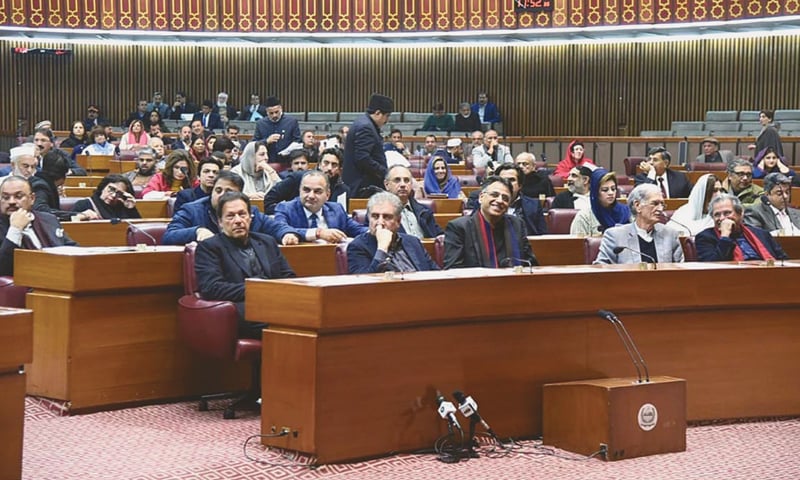
23 January 2020, Thursday
On 18 January 2020, the ruling party Pakistan Tehreek-e-Inssaf’s Senator Mohsin Aziz, while attending the annual report of National Commission on Status of Women (NCSW), said: “Honour killing is an issue, but honour and culture are also important,” enflaming criticism and rage. He added that women must live abiding Islamic Sharia and further condemned NGOs for raising gender equality slogans on International Women’s Day. The opposition reacted through harsh criticism.
PPP Parliamentary leader Shery Rehman accused Aziz of exploiting culture and religion to oppress women. She said: “We (women) are neither a second gender nor will we condone honour killings in this house.”
PML-N Senator Pir Sabir Shah commented that while discussions and deliberations regarding women’s rights and freedom are important, family setups are crumbling in the name of liberating women.
By emphasizing on honour and culture Aziz attempted to downplay the issue of honour killings, leaving an impression of supporting the problem.
The very fact that such an argument has occurred in Pakistan’s Senate illustrates the pitiable state of women’s affairs in Pakistan. As per the NCSW report, in 2017, 40 cases of acid attacks and 1882 cases of violence against women were reported in Punjab province (21% increase); 1000 in Lahore and 756 in Muzaffargarh. Based on the report, Jamaat e-Islami senator Mushtaq Ahmed and PTI Senator Ezdi highlighted the lack of over 12 million women registered with NADRA (National Database and Registration Authority) in the electoral polls.
Pakistan’s Chief Justice recently announced the setting up of over 1000 courts to prosecute violence against women. Despite a few governmental efforts, extensive work is required for the upliftment and security of home-based workers and rural women. The NCSW is already facing hindrances in abundance due to lack of resources.
According to reports, from 2011 to 2017, over 51,241 cases of violence against women were reported but the conviction rate remained as low as 2.5%. Between 2004 and 2016 over 15,000 cases of honour crimes, 1800 cases of domestic violence and 5500 kidnappings of women were reported. Every year over 1000 girls from minority communities (Hindu and Christian) are forced to marry Muslim men. Women from minority communities are particularly prone to abuse.
Pakistan’s ranking as the sixth most dangerous country for women globally can be attributed to a systematic problem – patriarchal attitudes. Structural violence against women manifests in sexual crimes, honour killings, domestic violence, kidnappings, forced marriages, acid attacks etc. are rising rapidly.
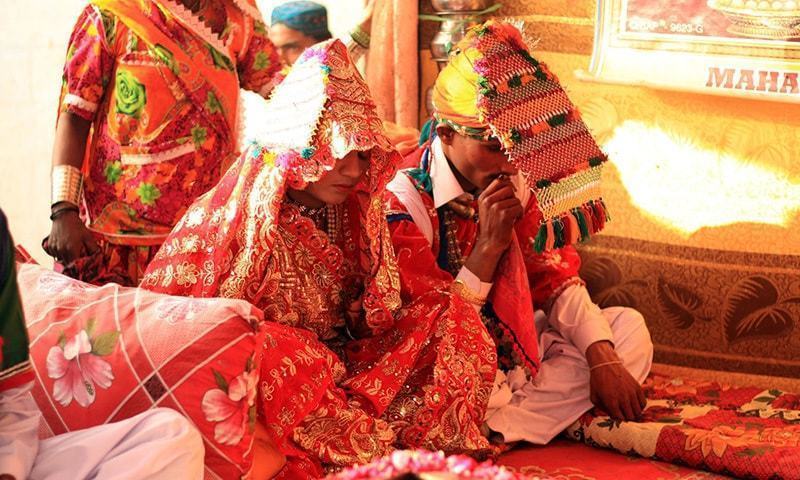
18 January 2020, Saturday
For Immediate Release
18 January 2020, Saturday
A Parliamentary Committee formed to protect minorities from forced conversions in Pakistan met during the week to adopt terms of reference for its proceedings. Dawn, in one of its reports (18 January 2020) quoted the Chairman of the Committee making crucial observations on the issue, as the Committee proceeds to finalise its report in the next six months.
In November 2019, the Senate in Pakistan formed Parliamentary committee that would work on legislation to prevent the forced conversion of minorities. The 22 member Parliamentary Committee to Protect Minorities from Forced Conversions was formed after consultations with the Speaker of the National Assembly, Leader of the Senate House and the Leader of the Opposition in Senate. The Committee includes the Minister for Religious Affairs, Minister for Human Rights and Minister of State for Parliamentary Affairs.
Senator Anwarul Haq Kakar, serves as the Chairman of the Committee. He was quoted to have observed that while the aggrieved community complain the issue as forced conversion, religious parties including the Jamaat-i-Islami and Jamiat Ulema-i-Islam consider the same as willful conversion.(Dawn, 18 January 2020)
The committee also observed that the forceful conversion is taking place primarily in Sindh, whereas the non-Muslim minority communities in the tribal regions of the KP are not under threat, because of local support to them from the community. According to Senator Sajjad Turi, from Parachinar in Khurram Agency: “Sikhs and Hindus live in remote villages. And we try our best to protect [them] against Taliban. Everybody is happy there so what we need to do is narrow down the course of discussion to the infested areas.”
Sindh, in particular, faces the problem of forced conversion. According to an Express Tribune report, quoting Aurat Foundation, “around 1,000 women and young girls from religious minorities in Pakistan are forced to convert to the religion of the majority and marry their kidnappers every year. The Human Rights Commission of Pakistan believes that more than 20 Hindu girls are kidnapped every month.” (The Express Tribune, 15 October 2019).
The provincial assembly attempted to address the issue through a bill, but could not pass it due to opposition from religious groups. The PPP government caved in and allowed the bill to be torpedoed.
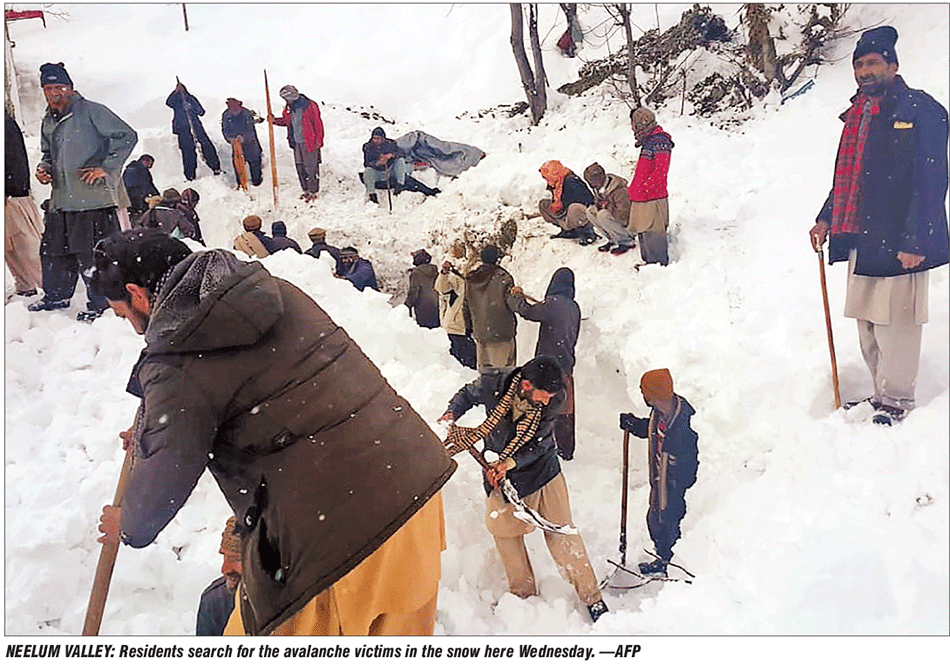
17 January 2020, Friday
For Immediate Release
17 January 2020, Friday
The recent avalanches in the Neelum Valley in Pakistan occupied Kashmir (PoK) have nearly killed 80 people, along with destroying residential buildings, snapping communication lines, electricity supplies, and isolating villages due to roadblocks. The avalanche was a result of the heavy snowfall experienced in the region.
According to weather reports, Pakistan is witnessing one of the harshest winters in two decades. Search and rescue operations are being conducted by the National Disaster Management Authority (NDMA) as well as the armed forces.
Elsewhere, Baluchistan also has been adversely affected by heavy snow and floods simultaneously. According to the Provincial Disaster Management Authority (PDMA), an emergency has been declared in Ziarat, Pishin, Harnai, Qila Abdullah, Mastung and Kech districts. To support and increase resilience to disasters and climate change, Norway and Asian Development Bank have agreed to contribute $5 million to the National Disaster Risk Management Fund (NDRMF).
Climate change is not related only to global warming. Extremities and increased intensity in every season define climate change. The intensity of Pakistan's current cold wave is related to such changes. The Global Climate Risk Index, 2018, has noted that Pakistan as the fifth-most affected country by climate change. Extreme weather conditions, continuous droughts, floods and heavy precipitation and frequent earthquakes have been directly responsible for the death of 10000 people from 1999-2018. Few areas in Pakistan occupied Gilgit-Baltistan, are exposed to high risks, given the expansion of the Shisper glacier in the Karakoram Range. It is one of the few glaciers that are expanding in both length and width, causing the debris and ice to move down at a rate of approximately four metres per day.
While mitigation of climate change needs a long-term plan, adaptation and disaster management is the need of the hour. Pakistan is one of those countries whose contribution to greenhouse gas emissions is low but is at a more vulnerable position with regards to climate risks. This is mainly due to weak disaster management capabilities. Pakistan lacks financial as well as technical resources to reduce the vulnerability of the population. The government has to focus more on revamping the entire mechanism and strengthening the preparedness of the forces and the population.
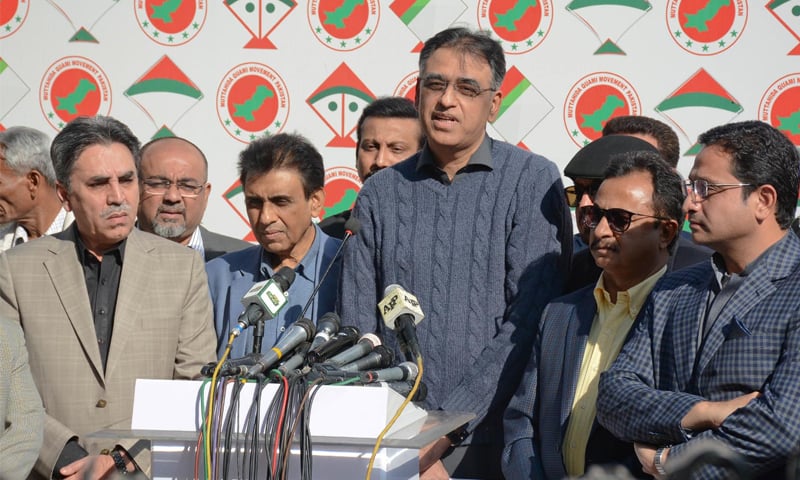
16 January 2020, Thursday
For Immediate Release
16 January 2020, Thursday
A week after the resignation of MQM's Khalid Maqbool Siddiqui from the federal cabinet, Tariq Bashir Cheema, another federal Minister of Housing and Works stopped taking part in the cabinet meetings. Cheema belongs to the Pakistan Muslim League-Q (PML-Q) which is a coalition partner of the PTI – both at the national assembly and in the provincial assembly of Punjab.
The PML-Q currently has five seats in the Parliament and 10 in the Punjab provincial assembly. Out of the 342 seats in the Parliament, the PTI today has 149 seats. The party needs the support of the coalition members that include the MQM-P, PML-Q, BNP and GDA. PML-N and PPP – the two primary opposition parties to the PTI have 82 and 54 seats respectively.
In the Punjab provincial assembly, out of 371 seats, PTI has only 181 seats. The primary opposition in Punjab – the PML-N has 166 seats. With ten seats, support of the PML-Q is crucial for the PTI to run the provincial government in Punjab. Political support of the PML-Q is essential for the PTI – both at the provincial and national levels.
The primary differences of the PML-Q and the MQM-P with the PTI are local. Both the partners – PML-Q and MQM-P from Punjab and Sindh respectively have their main interests at the provincial levels. In Sindh, MQM-P's vote bank is primarily in Karachi; since the primary competition in Karachi is vis-à-vis the PPP, the MQM-P wants to be seen as doing something in the city. Hence it wants the PTI to do more in Karachi.
On the other hand, PML-Q's primary grievances are in Punjab. The provincial government led by the PTI wants to expand its footprints in Punjab, as its primary opponent – the PML-N under the Sharifs still have a more significant influence. The PML-Q seeks to have more space, especially in those constituencies from where it has won, and in those where it would be able to win. From transfers to appointments, the PML-Q wants a free hand in select districts of Punjab.
Besides the MQM-P and PML-Q, Grand Democratic Alliance (GDA) is another partner from Sindh, with one seat at the Parliament and three in Sindh provincial assembly. The GDA is also unhappy with the coalition, as it feels that the PTI is not honouring the understanding.
The PTI government has formed multiple teams under Pervez Khattak and Asad Umar to appease the coalition partners in Punjab and Sindh respectively.
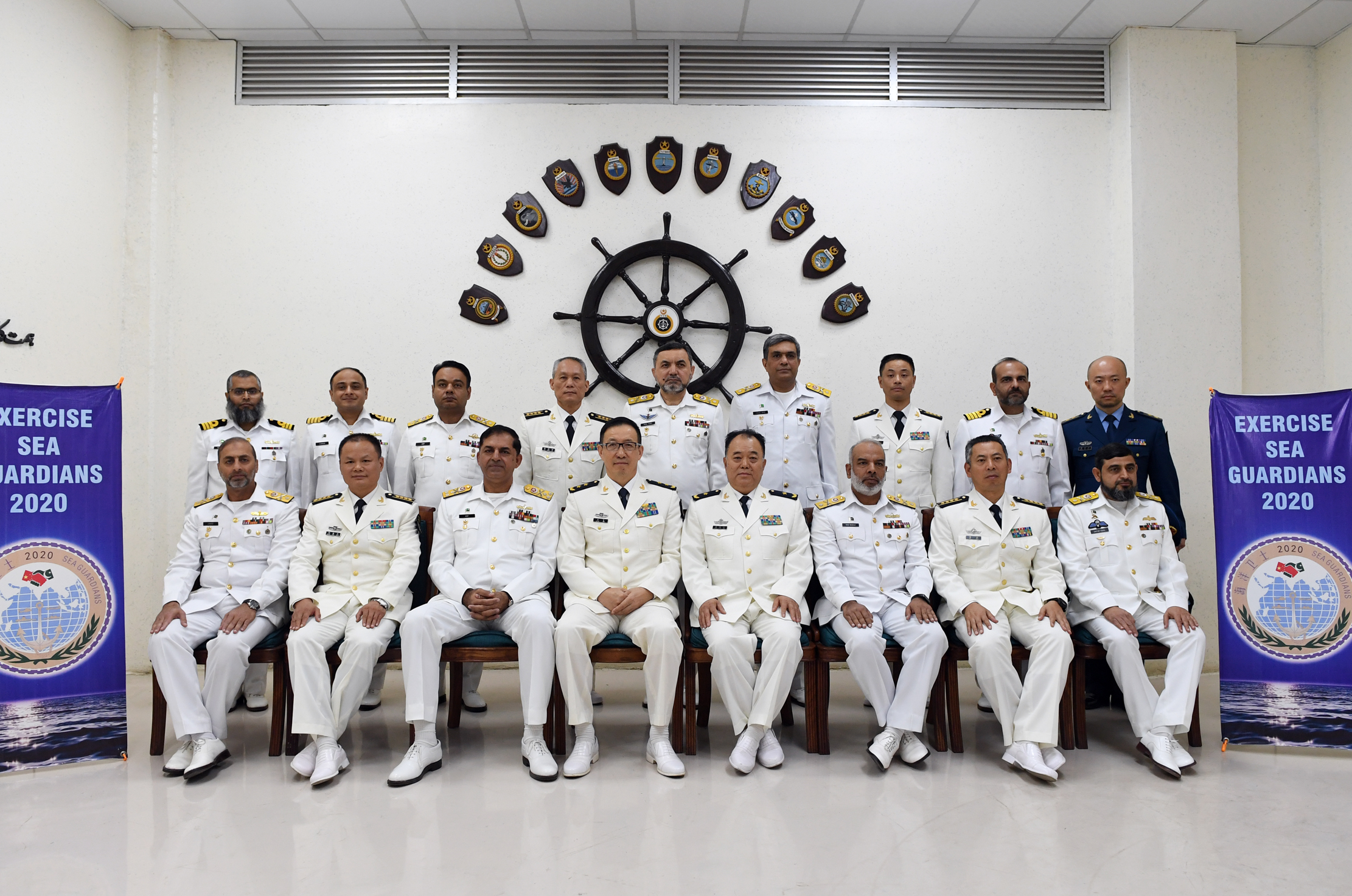
15 January 2020, WednesdayÂ
For Immediate Release
15 January 2020, Wednesday
Pakistan and China concluded their sixth joint Naval exercises on 14 January 2020. The Sea Guardians 2020, according to a South China Morning Post report, “took place in the northern reaches of the waterway and along the Pakistani shoreline” involving “special forces, warships, aerial assets and, for the first time, submarines in a series of live-fire exercises.”
Vice Admiral Dong Jun, the Deputy Commander of Southern Theatre Command PLA (Navy) Vice Admiral Asif Khaliq, the Commander of Pakistan Fleet took part in the concluding ceremony, that took place for nine days in the Arabian Sea. A note from the China Military quoted Vice Admiral Dong Jun stating, “We are confident to make the ‘Sea Guardians’ a new and excellent exercise brand in our military-to-military exchanges with Pakistan. It will make greater contributions to safeguarding the common security interests of the two countries and defending regional and world peace.” (http://eng.chinamil.com.cn/view/2020-01/14/content_9716985.htm)
According to the China Military note, “Sea Guardians 2020 is of the largest scale in the history of China-Pakistan joint naval exercises, with a large diversity of participating troops and wide coverage of maritime subjects. The Chinese participating troops mainly come from the People's Liberation Army (PLA) Southern Theater Command Navy, with five vessels including destroyer, frigate, supply ship and submarine rescue ship, two carrier-based helicopters, and more than 60 special operations members. The Pakistani side assigned two Zulfiquar-class F22P/F21 frigates, two fast attack craft (FAC), one fixed-wing anti-submarine patrol aircraft, two carrier-based helicopters, and about 60 special operations.”
While a section views the naval exercises between China and Pakistan in the background of the recent tensions in the Middle East involving Iran and the US, it may not be an accurate reflection.
For an exercise of this magnitude to happen involving two navies, it should have been planned earlier, with a clear plan. Hence, recent developments in the Middle East cannot be a trigger for the latest joint navy exercises between Pakistan and China. The fact that this is a series underlines a different story – of evolving interests between the two countries in the maritime domain involving the Arabian Sea.
Earlier, China and Pakistan concluded a month-long military training exercise code-named Warrior VII in early January 2020. According to a China Military note, the exercise that was started during the first week of December aimed at “counter-terrorism operations and target defense” and to “ carry out intensive training on organization and coordination, close combat skills, battlefield reconnaissance and maneuver penetration, in a bid to test the troops' skills and tactics, and improve the quality of military training and combat preparation.” (http://eng.chinamil.com.cn/view/2019-12/06/content_9691028.htm)
The PLA Navy is looking at the joint exercises as a part of enhancing their presence, their ability to coordinate exercises with the Pakistan Navy and importantly to integrate the technologies between the two Navies. Another note from the China Military quoted Senior Captain Ye Dan, commander of the Chinese naval fleet, commenting: “The joint exercise promoted the deep integration of the technologies and tactics of the two navies and deepened the exchanges and cooperation between the two sides.” He was also quoted to have stated: “The first actual-troop submarine rescue exercise at sea greatly improved the underwater emergency rescue capabilities of the two navies, and also tested and improved the actual combat training level of the formation. The entire formation completed the scheduled subjects and related training plans and laid a good foundation for our new mission.”
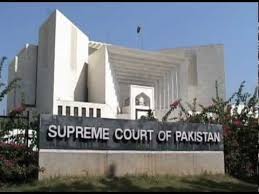
14 January 2020, Tuesday
For Immediate Release
14 January 2020, Tuesday
A three-member bench of the Lahore High Court that was hearing the petition of Gen Musharraf against the death sentence ruled that the Special Court that gave the verdict was unconstitutional, and hence the sentence also not under the constitutional law.
The bench also ruled that the treason case against Pervez Musharraf not pursued in accordance with the law.
The full order is expected shortly; according to the Lahore High Court ruling, it is clear that the death sentence pronounced by the Special Court is null and void.
Brief background of the trial
After coming to power in 1999 through a coup, Gen Pervez Musharraf, in November 2007 imposed emergency and suspended the constitution. Later in November 2007, he resigned as the Chief of Army Staff and became the President of Pakistan. In December 2007, President through a decree revoked the emergency.
In August 2008, facing severe political opposition and fearing an impeachment Musharraf resigned. In July 2009, the Supreme Court, headed by Justice Iftikhar Chaudhry declared the emergency imposed by Musharraf as illegal and unconstitutional.
In November 2013, the PML-N government headed by Nawaz Sharif filed five charges against Musharraf. In December 2013, the Special Court convened for the same, under Article 6 of the Constitution, summoned Musharraf to appear in front of it, starting a lengthy proceeding. According to article 6 of the constitution, “any person who abrogates or subverts or suspends or holds in abeyance, or attempts or conspires to abrogate or subvert or suspend or hold in abeyance, the Constitution by use of force or show of force or by any other unconstitutional means shall be guilty of high treason.”
In March 2016, Musharraf left for Dubai on medical grounds, and the Special Court declared him as an absconder in May 2016. Despite multiple notices, Musharraf failed to appear in front of the Special Court. In April 2019, a Supreme Court order of the then Chief Justice Asif Khosa stated: “If the accused avails defence under Section 342, then he should appear before the special court, otherwise he will lose the right of defence.” (Dawn, 2 April 2019)
In December 2019, the Special Court pronounced its verdict on the case. Under Article 6 of the Constitution, the Special Court found Musharraf guilty of treason and handed over the death sentence.
The Special Court’s decision was highly debated within Pakistan. While a section welcomed and interpreted the decision as a deterrence against any future interference against the democratic process, the Establishment and the government was unhappy about the verdict.
On 13 January 2020, the Lahore High Court overturned the decision of Special Court. According to the verdict, the formation of the Special Court was unconstitutional, and the sentence could not be applied “ex post facto.”
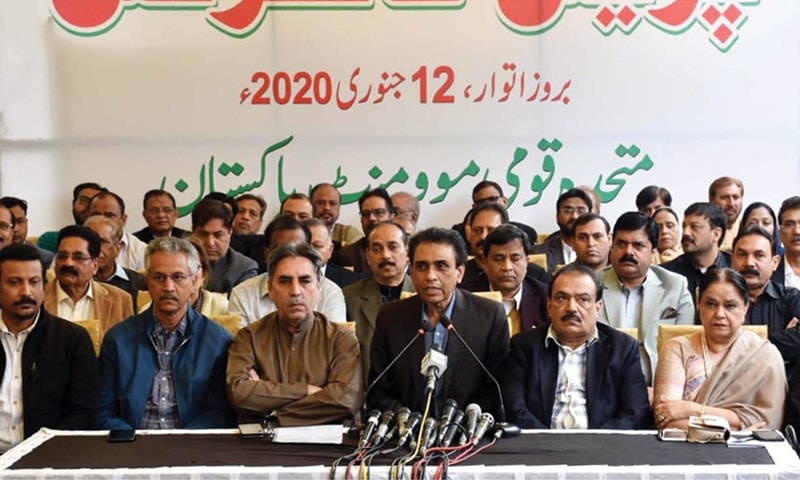
13 January 2020, Monday
For Immediate Release
13 January 2020, Monday
Dr Khalid Maqbool Siddiqui resigned from the ruling coalition on Sunday. Siddiqui is the convenor of the Muttahida Qaumi Movement-Pakistan holding the position of a federal cabinet minister heading the Ministry of Information Technology and Telecommunication (MoITT).
Addressing a press conference with other MQM-P leaders in Karachi, he was quoted to have stated: "We are not quitting the [federal] government...we will continue to support it…We hope that [the PTI] will address our grievances by implementing the MoU." According to Dawn, "he did not deem it right to continue to stick with the federal government that had done nothing for the urban areas of Sindh during the past one and a half years."
The MQM is a partner of the ruling PTI coalition at the national level. The party has seven seats in the National Assembly Parliament, and five in the Senate. The support of the MQM is crucial for the PTI, along with a few other smaller parties – PML-Q and BNP from Punjab and Balochistan respectively.
The PTI has given two ministerial berths to the MQM-P in the National Assembly. While Siddiqui has resigned, the other MQM minister in the federal ministry – Dr Farogh Naseem has not resigned. Naseem heads the Ministry of Law and Justice. Dr Naseem is considered to be closer to the Establishment. He resigned as the minister to represent Gen Bajwa's case in the Supreme Court during November and was reinstated by the PTI government in the same month.
If the MQM-P is unhappy about the relationship with the PTI, all its ministers should have resigned. The fact that one quit, and the other remains to be the minister, should underline the MQM-P's strategy to pressurize the government. Though the stated reason is the failure of the PTI to implement the MoU between the two parties, it is suspected that the MQM-P is looking for one more ministry.
Second, the MQM-P's primary strength is in Karachi, and it wants to be seen as contributing to the development of the city. The party wants more from the federal government for Karachi, which remains its primary vote bank.
A few weeks earlier, Bilawal Bhutto gave a public invitation to the MQM-P to resign from the PTI coalition and join the PPP in Sindh. He also promised to accommodate the MQM-P in the provincial cabinet.
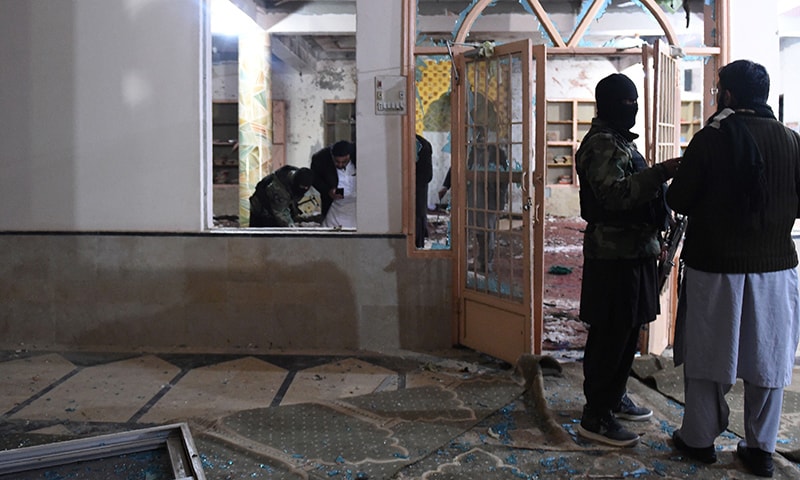
11 January 2020, Saturday
For Immediate Release
11 January 2020, Saturday
Shattering a long calm in Balochistan and in Pakistan, the first suicide attack in 2020. The Islamic State has claimed the killing, that took 15 lives, that were offering prayers on Friday.
Amongst the victims was a Deputy Superintendent of Police, who is believed to be the primary target of the suicide bombing. His son was killed a month earlier, again in Quetta, by gunmen on motorcycles.
The suicide attack in Quetta in Balochistan that took place on 10 January followed a low profile bombing in Quetta, a few days earlier. The previous attack took place in a market area, was a bomb placed on a motorbike, that killed two people. Hizbul Ahrar, one of the TTP affiliate, claimed the attack.
According to the latest report of the Center for Research and Security Studies (CRSS), there was a 31 per cent decline in Pakistan relating to terrorism across the country. Though there was also a decline in terrorism-related events and casualties in Balochistan (by more than 44 per cent) during 2019, the province remained the most affected when compared with the other three provinces.
The primary focus of the attacks within Balochistan has been concentrated in Quetta. Most of the attacks have been sectarian in nature, followed by targeted attacks against the security forces.
Both the attacks in Balochistan during 2020 so far has been in Quetta and are targeted attacks, though they were claimed by two different groups – the Islamic State and Hizbul Ahrar.
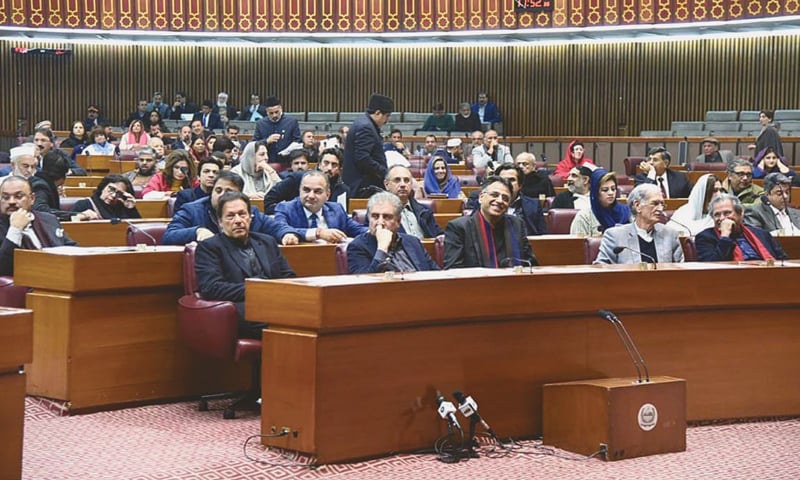
8 January 2020, Wednesday
For Immediate Release
8 January 2020
On Tuesday, the National Assembly of Pakistan passed three bills - the Pakistan Army (Amendment) Bill 2020, the Pakistan Air Force (Amendment) Bill 2020 and the Pakistan Navy (Amendment) Bill 2020, in record time. This would allow the government to extend the tenures of three Chiefs and also the Chairman Joint Chiefs of Staff Committee.
While the smaller parties including the Jamiat Ulema-i-Islam (JUI-F), Jamaat-i-Islami, Pakhtunkhwa Milli Awami Party (PkMAP) and National Party (NP) did not vote in favor of the bills, two primary opposition parties – the PML-N and the PPP voted in favor of the bills, making the government's task easier. Though the smaller parties opposed the bills even at the committee stage, the bills were passed without any major discussion in the Parliament. As Dawn commented, the bills were passed without a "murmur" in 20 minutes. The PPP had proposed a few amendments to the bills earlier, but quietly withdrew them when they were submitted in the National Assembly.
The three bills will fix 64 years as the maximum age for the retirement for three services chiefs and also the CJCSC.
According to a newspaper source, (Dawn, 4 January 2020) Clause 8B (1) relating to the extension of COAS service says: "Notwithstanding anything contained in this Act or any other law for the time being in force, the President, on the advice of the Prime Minister, may reappoint the Chief of the Army Staff for additional tenure of three (03) years, or extend the tenure (s) COAS up to three (03) years, on such terms and conditions, as may be determined by the president on the advice of the prime minister, in the national security interest or exigencies, from time to time." Section (2) of Clause 8B that says: "Notwithstanding anything contained in this act or any other law, or any order or judgment of any court, the appointment, reappointment or extension of the COAS, or the exercise of discretion by the appointing authority in this regard, shall not be called into question before any court on any ground whatsoever."
On 3 January 2020, the PTI government introduced above three bills in the Standing Committee on Defence of Pakistan's National Assembly, which was passed without any serious discussions. In the Committee proceedings, the leading opposition political parties PML-N, PTI and JUI-F did not oppose the bills, while few smaller parties including the Jamaat-i-Islami, Pakhtunkhwa Milli Awami Party (PkMAP) and National Party (NP) rejected the same.
During 2019, the PTI government issued a notification to extend the tenure of Gen Qamar Bajwa, Chief of Pakistan's Army. He was to retire in November 2019. The government cited the regional security situation as a reason for extending Gen Bajwa's term for three years. He was appointed in November 2019 as the Chief of Army Staff in 2016 by the PML-N government, following the retirement of Gen Raheel Sharif.
The Supreme Court rejecting the government's notification asked the Parliament to look into the matter and pass appropriate legislation. However, it also gave a six months period for the continuation of Gen Bajwa as Army Chief, during which the Parliament is expected to pass the legislation.
The verdict of a three-member bench of the Supreme Court in November 2019 stated: "The current appointment of General Qamar Javed Bajwa as COAS shall be subject to the said legislation and shall continue for a period of six months from today, whereafter the new legislation shall determine his tenure and other terms and conditions of service." (Dawn, 28 November 2019).
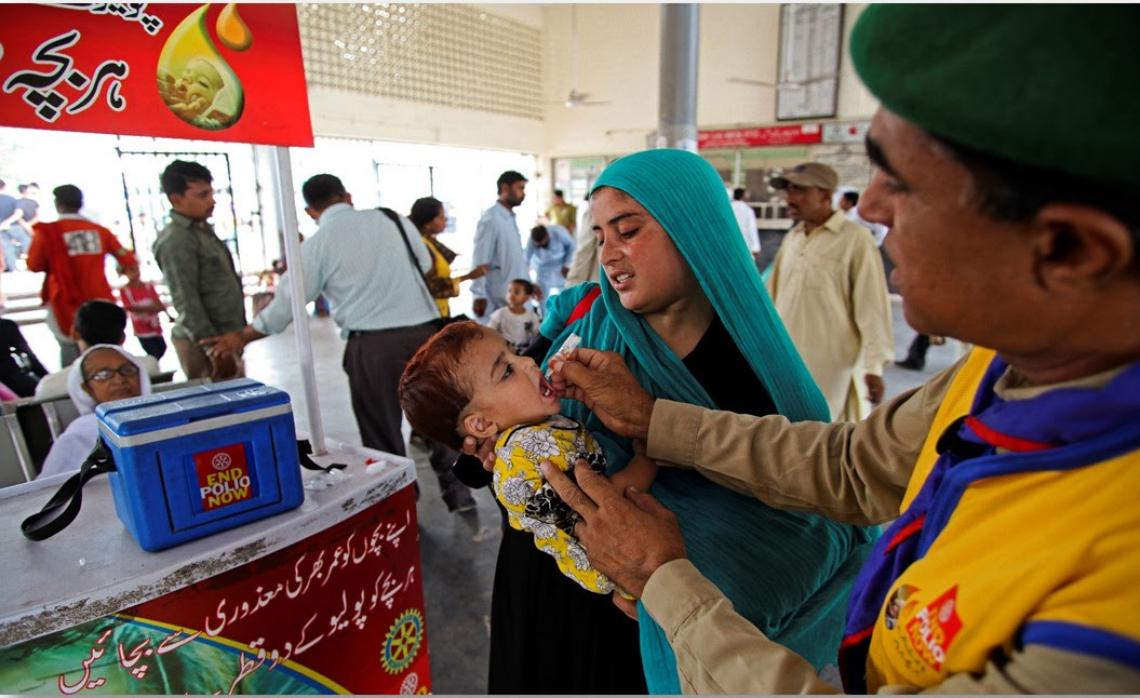
5 January 2020, Sunday
For Immediate Release
5 January 2020, Sunday
With the reporting of new cases from Sindh, Balochistan and KP, the number of victims to poliovirus in 2019 has increased to 128. Commenting on the recent incidents in Sindh, a National Institute of Health (NIH) official was reported telling that one of the children affected by the virus did not receive a single dose of the vaccine.
According to the UNICEF, "Pakistan is one of three remaining polio-endemic countries in the world, along with Afghanistan and Nigeria." Despite the government initiatives since 1994, the poliovirus has not been wholly eradicated, for three primary reasons.
First, the seriousness and the capacity of the government – both at the national and provincial levels. The Polio Eradication Programme was launched in Pakistan during 1994. For the last 25 years, the government has been engaged in fighting the poliovirus. When compared to 20,000 cases in the 1990s, to a mere 100 plus in 2019, the government has come a long way in addressing polio in Pakistan. But, as could be seen from the cases in 2019, the problem is yet to be eradicated. The fact that the virus exists only in two other countries – Afghanistan and Nigeria shows with whom Pakistan is bracketed with in terms of healthcare.
While at the national level, there is better exposure, it is at the provincial levels there is a gap. Mainly in three provinces – KP, Balochistan and Sindh.The fact that the government is unable to provide security to the health workers to admit the polio vaccine in rural districts of these three provinces shows where the heart is.
The second primary problem in fighting poliovirus in Pakistan is with society. Illiteracy and lack of exposure prevent society from taking this problem seriously and tackling it. A majority in the patriarchal society believes that there is a conspiracy from the West in reducing the population growth in the Muslim World and polio vaccine is a strategy towards achieving that! As a result, a section within the society is neither willing to administer the vaccine, nor accept to provide blood samples to the health workers.
Finally, the militant groups during recent years have been targeting the health workers who go to rural areas. Especially after the killing of Osama bin Laden by a secret US raid, the militant groups target these health workers as spies of the West. Or, perhaps, since they are easy targets, it is using Laden's killing as an excuse to target the health workers. Remember, Dr Afridi, who ran a vaccine programme, was instrumental in collecting the blood samples and confirm Laden's presence in Abbottabad..
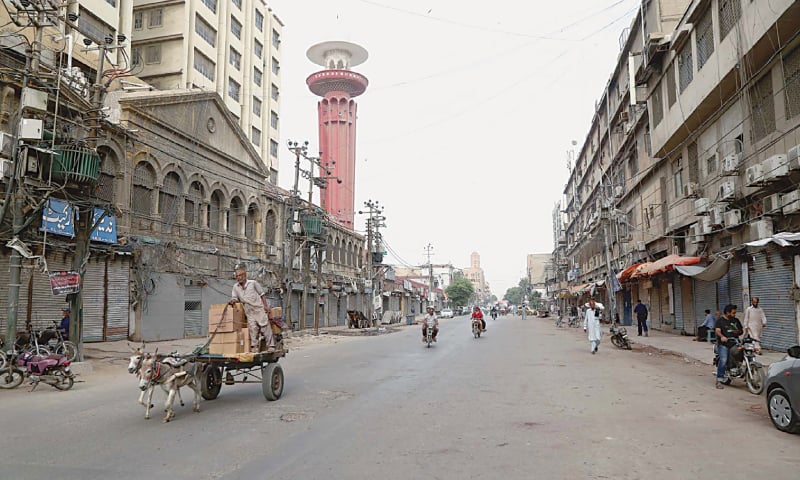
Markets closed in Karachi
31 October 2019
For immediate release
31 October 2019
Traders across Pakistan have called off a nation-wide strike that took place during 29-30 October. A group of five associations called for a strike against government attempts aimed at widening the tax net and policies ensuring tax payment by traders.
Traders’ association from Lahore, Quetta and Karachi closed down all markets for two days. The first round of talks between the traders and the Federal Board of Revenue failed with the latter citing stringent conditions applied by the International Monetary Fund (IMF). The traders protest that the IMF conditions have been detrimental to small businesses and traders and policies such as collecting additional duties and taxes on imports are anti-trader policies.
According to Dawn, the traders collectively oppose the “taxes on imports, the CNIC condition on transaction of Rs 50,000 or above on locally produced items, sales tax registration, turnover tax, fixed tax, etc.”
The strike was called off after the traders’ association reached an eleven-point agreement with the government on 30 October. The government, for the time being, has caved into the traders' demands and has agreed to relook at its policies. The government will continue the CNIC condition but has deferred the implementation until January 2020. However, concessions in the form of sales tax registration will mainly leave the condition ineffective.
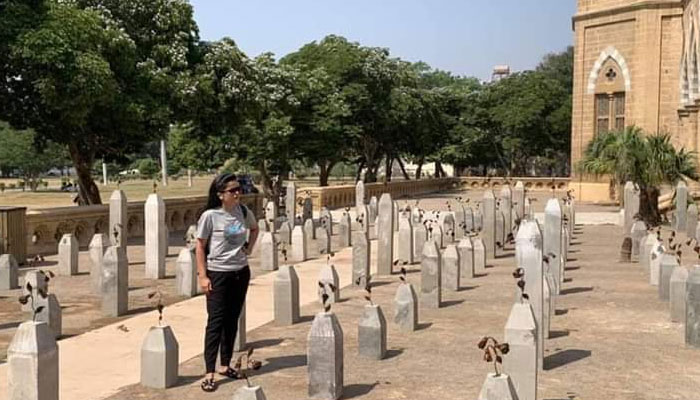
30 October 2019
For immediate release
30 October 2019
Karachi, 30 October: On 27 October, a group of unknown men forced partial closure of art exhibit in Karachi Biennale. In Karachi Frere Hall, two Law Enforcement Personnel forced the shutdown of an art exhibition by Adeela Suleman on former SSP Rao Anwar.
Anwar Rao, an encounter specialist, has been accused of killing 444 people between 2011 and 2018. Anwar an ex-policeman gained prominence after the countrywide protest following the death of a Pashtun model, Naqeebullah Mehsud in a fake police encounter. This gave momentum to the rise of the Pashtun Tahaffuz Movement (PTM) which demanded end to ethnic disparity and an end to unlawful murders of Pashtun.
Adeela Suleman is an associate professor and head of the fine art department expresses her concern on Karachi's bloody history. The exhibition titled "Killing fields of Karachi" presented the death of 444 victims with gravestone accompanied by a short documentary, featuring Naqeebullah's father. The shutdown of the lower gallery of Frere Hall rose civil unrest. Various activists and artists came forward to protest against failed the government.
Karachi Biennale flagship project uses art as vehicle to discover, discuss and respond to Karachi. This year Karachi Biennale 2019 grounded on the theme- Ecology and Environment- to bring forward the devastating development in Karachi.

30 October 2019
For immediate release
On 27 October 2019, the Pakistan Electronic Media Regulatory Authority issued directives to all satellite TV channel licensees to prevent them ‘from airing discussions, analysis, speculations on sub-judice matters.’ The document mentions the case between ‘Mian Muhammad Shehbaz Sharif vs. The State, etc.’ to raise objections on ‘speculative discussions’ by media persons. It claims that some news channels through discussions have alleged irregularities in Nawaz Sharif’s bail, thereby staining the court’s reputation.
As reported in the Dawn, the courts have also looked into concerned news channels for further examination. According to the notification, news channels would be held responsible for spreading disinformation and biased views ‘against judiciary and state institutions’. Despite PEMRA’s notices in the past aimed to restrict the channel’s publishing rights, the regulator claims repeated violations by licensees.
Electronic Media (Programmes and Advertisements) Code of Conduct -2015 forbids news channels from broadcasting debates that can harm matters under judicial consideration. Banking on its code of conduct, confines the role of news anchors to that of moderators and barring themselves from personal opinions. Also, the regulator has directed regular anchors of news channels against appearing in talk shows. PEMRA is the media regulatory authority in Pakistan which regulates and issues licenses to both print and electronic media outlets in Pakistan.
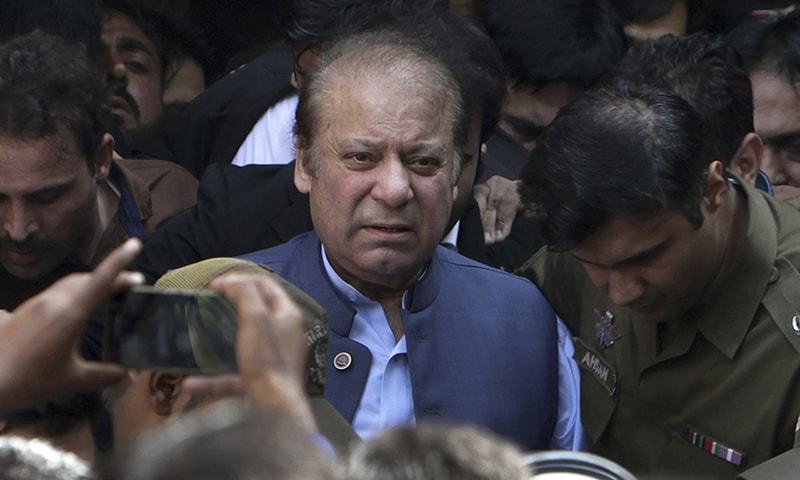
30 October 2019
30 October 2019
According to Dawn, former Prime Minister Nawaz Sharif refused to be inspected by a doctor who was employed by the government while in NAB custody. Sharif is under ten-day NAB custody regarding the Chaudhary Sugar Mills case. He has refused to be seen by the official doctor and has demanded to be seen by Dr Adnan Khan, his personal doctor. Dr Khan had earlier visited Sharif thrice during October. Sharif was admitted to Services Hospital on 21 October after considering reports and advice given by Dr Khan.
Sharif did not allow any of the government doctors to inspect him before 21 October after he was moved to Services Hospital. The doctors posted at the place were only allowed to check his blood pressure and his blood tests were taken by Dr Khan.
According to a report checked by Dr Khan, Sharif’s blood count was shown to be at dangerous 18,000 platelets. An official told the Dawn that it was difficult to correctly gauge the status of his health since he has refused to be checked by anybody other than his personal doctor.
Dr Khan had tweeted earlier about Sharif’s deteriorating health especially in wake of his kidney functions, low platelet count, low blood pressure, low blood sugar and heart attack. NAB wrote a letter to Dr Khan requesting him to refrain from spreading incorrect information about Sharif’s health as he was taken care of by the medical authorities. Keeping in mind the cardiac problems, Sharif was provided with home-cooked food, three doctors, round-the-clock staff and an ambulance.